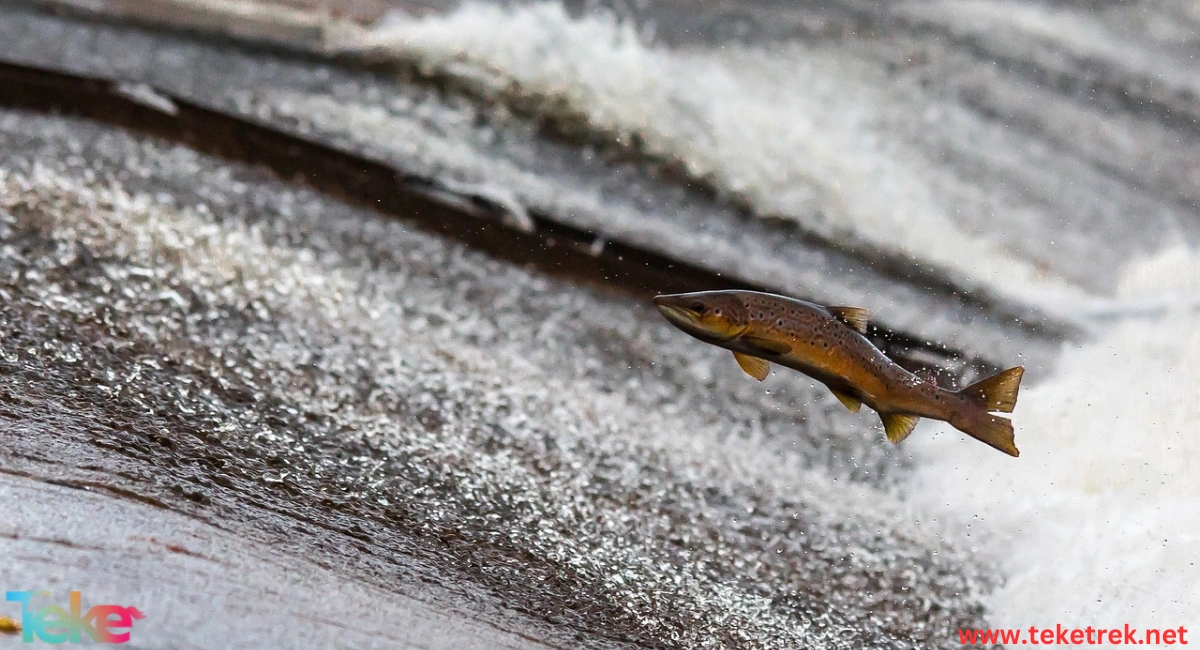Flying fish are a type of marine fish that have developed a unique strategy to escape from predators by jumping over the water surface or “flying,” as some believe, hence their name. Let’s learn more about flying fish through the following article from teketrek:

What are the characteristics of flying fish?
Flying fish belong to the kingdom Animalia, class Actinopterygii, order Beloniformes, family Exocoetidae, phylum Chordata, subphylum Vertebrata, and class Actinopteri.
They are fish with radial fins found on highly modified pectoral fins. Despite their name, flying fish are not capable of powered flight.
Instead, flying fish propel themselves out of the water at speeds exceeding 56 kilometers per hour.
Once a flying fish reaches the air, its rigid wings allow it to glide for distances up to 200 meters.
The wing-like pectoral fins of flying fish are primarily designed for gliding, as the fish hold the fins flat at their sides while swimming.
The streamlined bodies of flying fish reduce water drag when the fish “fly.”
Another interesting feature of flying fish is their unevenly forked tail, which has a shorter upper lobe than the lower lobe.
Flying fish can reach lengths of up to 45 cm, but their average length ranges from 17 to 30 cm.
Where are flying fish found?
There are about 40 types.
Flying fish are tropical and temperate marine species that can be seen off the coasts of the Atlantic and Pacific Oceans in the United States.
It also lives in the Atlantic, Pacific, and Indian Oceans.
The open oceans provide a habitat for most flying fish, but some live instead on the edges of coral reefs.
It is believed that flying fish developed a flying mechanism to escape the many predators in the oceans; however, once they reach the air, they sometimes become food for birds.
What do flying fish eat?
Flying fish are carnivorous animals that eat a variety of foods.
It feeds heavily on plankton.
Sometimes flying fish also feed on small crustaceans.
Reproductive stages of flying fish:
Spawning occurs in the open ocean near the water’s surface.
The female flying fish lays eggs that are attached by sticky threads to seaweed and floating debris.
Newly hatched flying fish have filaments near their mouths, making them look like plants, thus protecting them from predators.
It lives about 5 years on average.
Interesting facts about flying fish:
Flying fish cannot fly; for these fish, flying is more like a small leap.
These fish can jump from the water and glide for unusual distances using their wing-shaped pectoral fins, which have been shaped to generate lift similarly to an airplane wing.
Jumping from the water is thought to be a great strategy for escaping predators.
Tuna and swordfish are very agile and fast hunters, and to escape them, flying fish completely leave their environment by jumping over the water.
Jumping from the water is a great strategy to avoid large fish, but unfortunately, flying fish sometimes fall prey to birds.
The numbers of flying fish are stable, and these fish are commercially fished in some places.
They are attracted to light, which makes them easy to catch as they tend to jump into small, well-lit boats.
It is worth noting that flying fish are fast and agile and rely on certain adaptations in the spine to reduce drag and jump gracefully over the water.

Frequently asked questions about flying fish:
- How fast do flying fish fly?
Maximum speed: 60 km/h.
- What are the predators of flying fish?
Tuna, swordfish, mackerel, marlin, dorado, as well as cetaceans and frigate birds.
- How do flying fish “fly”?
Flying fish use their large pectoral fins to jump from the water and glide over the surface for distances up to 650 feet.
- Are flying fish endangered?
Most species of flying fish are not endangered and are classified as of least concern.
- Can I eat flying fish?
Yes, flying fish are eaten in some cultures and are used in dishes like sushi.
In conclusion
flying fish comprise about seven genera and more than 50 species, all characterized by their long fins.
These fish live in the oceans, especially in tropical waters up to 200 meters deep, and as mentioned, their diet mainly depends on plankton. Flying fish are not at risk of extinction, and their numbers are good so far.
Refrences





